Chittoor travel - India, Asia
Chittoor is situated in the southernmost part of Andhra Pradesh, along the banks of the Neeva River. Known as the "Mango City" due to its rich production of various mango varieties. Nestled in the Ponnai River Valley and surrounded by picturesque hills, it features notable landmarks such as the historic Kanipakam Vinayaka Temple and the scenic Horsley Hills, a popular hill station. It is strategically positioned on National Highways 69 and 40, providing connectivity to major cities like Bangalore and Chennai, which are approximately 150 km and 165 km away, respectively. The city is bordered by several districts, including Tirupati to the east, Krishnagiri in Tamil Nadu to the south, and Kolar in Karnataka to the west.
The city is culturally significant, being close to the revered Tirupati temple, attracting millions of pilgrims each year. You can experience the city's vibrant local markets, lush landscapes, and unique culinary experiences, including delicious mango dishes and traditional South Indian fare.
Population: Estimate 1,900,000 people (as of 2024)
Economy: The district is a major market center for various agricultural products like mangoes, grains, sugarcane, and peanuts. The city has seen growth in industries like textiles, pharmaceuticals, and engineering. Major companies like Nutrine, a confectionery manufacturer, and Apollo Hospitals, a leading healthcare group, have their origins in Chittoor. While not a major draw for tourists, these industries contribute to the local economy.
With its proximity to popular pilgrimage sites like Tirupati and scenic attractions like Horsley Hills, Chittoor has significant tourism potential. The influx of visitors provides employment opportunities in hospitality, transportation, and retail sectors. Travelers can support the local economy by patronizing small businesses and trying regional specialties.
Landmarks: Kanipakam Vinayaka Temple, Sri Swayambu Varasidhi Vinayakaswamy Temple, Aragonda Sri Veeranjaneya Swamy Temple, Sri Subramanya Swamy Temple, Chandragiri Fort, Gurram Konda Fort, Horsley Hills, Kaigal Waterfalls ,Koundinya Wildlife Sanctuary
India
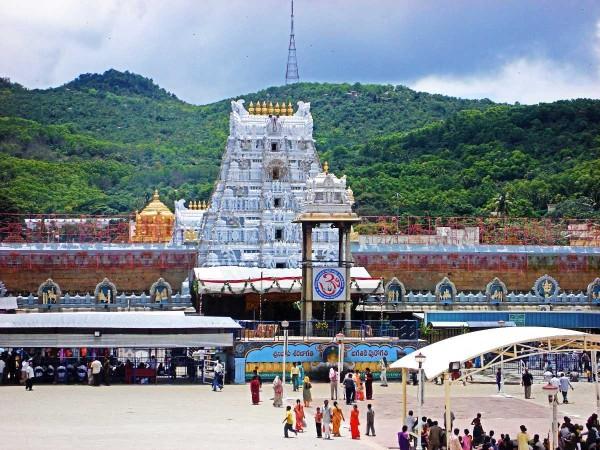
Overview of Chittoor
History & Cultural Influence
Chittoor has a rich historical background that dates back to the 4th century BC, beginning with the Mauryan Empire. Over the centuries, it has been ruled by various dynasties, including the Satavahanas, Cholas, Pandyas, and the Vijayanagara Empire, each leaving a distinct mark on the region's culture and architecture. The city played a significant role during the colonial period as a British military post, influencing its administrative structure and economic development.
Culturally, Chittoor is known for its vibrant traditions, particularly in music and dance, as well as its famous temples like the Kanipakam Vinayaka Temple and the proximity to Tirupati, a major pilgrimage site. This blend of historical significance and cultural richness has shaped Chittoor's character, making it a unique destination that attracts visitors interested in history, spirituality, and local traditions.
Interaction with The Locals
Chittoor is known for its hospitable and friendly locals. The ethnic makeup is predominantly Telugu, with a mix of other communities like Tamils, Kannadigas, and Muslims also present. Most residents are eager to help visitors and engage in friendly conversations, often going out of their way to assist tourists. The city's strong cultural heritage and religious significance contribute to a sense of community and openness towards outsiders. The primary language spoken in Chittoor is Telugu, though many locals also understand and speak Hindi, English, and other regional languages like Tamil and Kannada. Visitors who don't speak Telugu may face some language barriers, but most people are patient and willing to communicate using basic English or gestures.
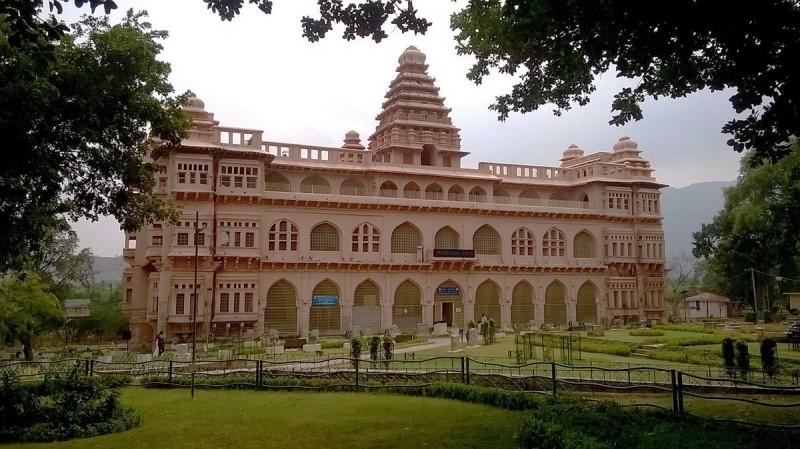
Chandragiri Fort Chittoor - © gather
Top attractions in Chittoor
Explore the historic city of Chittoor by visiting the magnificent Chandragiri Fort, known for its stunning architecture and panoramic views of the surrounding landscape. Don't miss the serene beauty of Horsley Hills, a picturesque hill station offering a refreshing escape with lush greenery and cool breezes. A trip to Chittoor is incomplete without visiting the revered Tirupati Temple, one of the most famous pilgrimage sites in India, attracting millions of devotees each year.
Kanipakam Vinayaka Temple
Location: About 11 km from Chittoor
This 11th-century temple is dedicated to Lord Ganesha and is famous for its self-manifested idol found in a well. The temple attracts numerous pilgrims, especially during festivals like Vinayaka Chavithi, and is renowned for its miraculous legends and beautiful Dravidian architecture.
Koundinya Wildlife Sanctuary
Location: Approximately 85 km from Chittoor
Spanning 358 square kilometers, Koundinya Wildlife Sanctuary is home to diverse wildlife, including elephants, cheetahs, and four-horned antelopes. It offers nature enthusiasts the chance to explore rich biodiversity and enjoy wildlife spotting in a serene environment.
Kaigal Waterfalls
Location: About 28 km from Palamaner
Kaigal Waterfalls is a stunning natural attraction that cascades from a height of 40 feet. This popular picnic spot is especially captivating during the monsoon season, offering visitors the chance to enjoy the beauty of nature and the soothing sound of flowing water.
Veeranjaneya Temple, Ardhagiri
Location: Around 27 km from Chittoor
Veeranjaneya Temple is linked to the mythology of Lord Hanuman and is believed to be the site where a part of the Sanjeevani mountain fell while Hanuman was carrying it. The temple is a significant pilgrimage site and offers scenic views of the surrounding hills.
Chandragiri Fort
Location: About 55 km from Chittoor
Chandragiri Fort, dating back to the 15th century, was built by the Vijayanagara kings. The fort features impressive architecture, including palaces and temples, and provides panoramic views of the surrounding landscape, making it a great spot for history buffs and photographers alike.
Gudimallam Parasurameswara Temple
Location: About 95 km Chittoor, Andhra Pradesh
This ancient temple, believed to date back to the 3rd century BC, is dedicated to Lord Shiva. Known for its intricate carvings and Dravidian architecture, it attracts pilgrims and history enthusiasts who appreciate its spiritual significance and artistic beauty.
Horsley Hills
Location: About 130 km from Chittoor
Horsley Hills is a popular hill station known for its lush greenery, pleasant climate, and scenic views. It offers opportunities for trekking, picnicking, and enjoying nature, making it a favorite getaway for both locals and tourists.
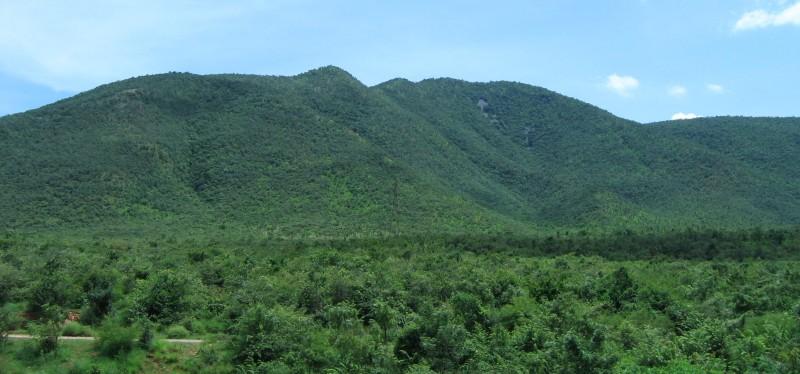
Koundinya Wildlife Sanctuary - © gather
Must-Try Dishes in Chittoor
When in Chittoor, savor the rich flavors of its renowned Biryani, a fragrant and spicy rice dish served with tender meat or vegetables, making it a local favorite. Don't miss the chance to try Haleem, a hearty stew of wheat, lentils, and meat, especially popular during Ramadan, or indulge in traditional sweets like Mysore Pak and Kaja, perfect for a sweet ending to your culinary journey.
Biryani
Chittoor is famous for its flavorful biryanis, crafted with fragrant basmati rice, marinated meat or vegetables, and a blend of aromatic spices. This dish, often served with raita (yogurt sauce), is a staple at local restaurants and a favorite among both locals and visitors.
Haleem
Haleem, a rich stew made from wheat, lentils, and meat, is especially popular during the holy month of Ramadan. Slow-cooked to achieve a creamy consistency, this hearty dish is beloved in Chittoor, often enjoyed at special gatherings and celebrations.
Jaggery
Jaggery from the Aragonda area near Chittoor is renowned throughout India for its quality. Made from sugarcane juice, it is a key ingredient in traditional sweets and desserts, adding a distinct sweetness and depth of flavor to various dishes.
Mango Dishes
Known as the "Mango City," Chittoor offers a variety of mango specialties, especially during the mango season. Local favorites like mango pickles and desserts made from ripe mangoes showcase the region's rich agricultural heritage.
Pulihora (Tamarind Rice)
Pulihora is a tangy rice dish made with tamarind, turmeric, and a mix of spices, often garnished with peanuts and curry leaves. This dish is a common offering at religious functions and is cherished for its unique flavor, making it a must-try for those exploring local cuisine.
Traditional Sweets
Chittoor is home to a variety of traditional sweets, including Mysore Pak and Kaja. These sweets are often made during festivals and special occasions, reflecting the region's culinary traditions and the importance of sweets in local celebrations.

Biryani - © gather
Festivals & Local Celebrations
Brahmotsavam Festival at Tirupati Temple
When: Annually in September or October
The Brahmotsavam Festival at the renowned Tirumala Venkateswara Temple in Tirupati draws millions of devotees from around the world. The temple comes alive with vibrant processions, traditional dances, and cultural programs, all set against a backdrop of elaborate decorations and special prayers.
Pongal
When: Mid-January (typically from 14th to 17th)
Pongal is a joyful harvest festival celebrated with enthusiasm in Chittoor. The festivities include decorating homes with kolam (rangoli), preparing the traditional Pongal dish, and watching bull-taming sports like Jallikattu, all accompanied by feasting, music, and dance.
Ugadi
When: Late March or early April
Ugadi marks the beginning of the Hindu New Year in Chittoor, celebrated with the preparation of Bevu Bella, a dish made from neem buds and jaggery, symbolizing life's bittersweet moments. The festival also features the ceremonial reading of the Panchanga (Hindu almanac), along with traditional music and dance performances.
Diwali
When: October or November (depending on the lunar calendar)
Diwali, the festival of lights, is celebrated with great fervor in Chittoor. The city sparkles with the glow of diyas (lamps), the excitement of bursting crackers, and the warmth of exchanging sweets and gifts, with various cultural programs enhancing the festive spirit.
Chittoor Gangamma Jatara
When: May or June
Chittoor Gangamma Jatara is a vibrant festival dedicated to the local deity Gangamma. The celebrations are marked by traditional rituals, colorful processions, and cultural performances, offering a rich immersion into the local culture and traditions.
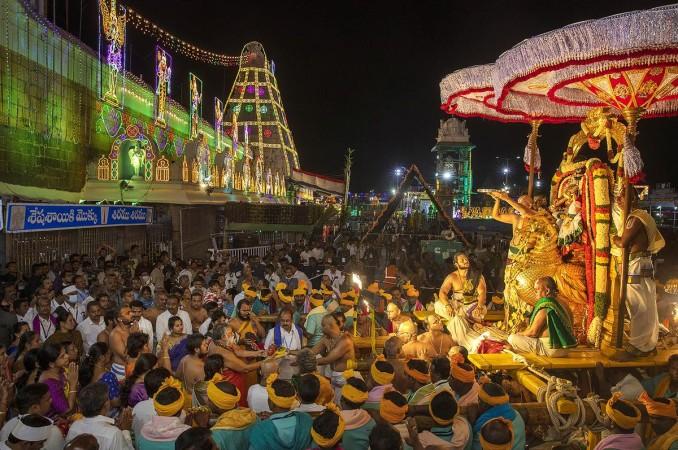
Brahmotsavam Festival at Tirupati Temple - © gather
Weather in Chittoor: Best Time to Visit
Chittoor experiences a tropical wet and dry climate, characterized by hot summers, mild winters, and a monsoon season. Here’s a detailed overview of the weather and climate patterns to help you prepare:
Average Temperatures
- Summer (March to June): Temperatures can soar, reaching highs of up to 40°C (104°F) in May. Average daily highs range from 31°C (88°F) in March to 39°C (102°F) in May, with nighttime lows around 20-25°C (68-77°F).
- Monsoon (June to September): The weather becomes milder during the monsoon season, with average temperatures around 28-34°C (82-93°F). Rainfall is significant, especially in September, which is the wettest month.
- Winter (October to February): Winters are pleasant, with average highs around 25-30°C (77-86°F) and lows dropping to about 18-20°C (64-68°F). January is typically the coldest month.
Rainfall
Chittoor receives an average annual rainfall of about 35.65 mm (1.4 inches), with the majority occurring during the monsoon months from June to September. September alone can see over 100 mm (4 inches) of rain, making it the wettest month.
Best Time to Travel
The ideal time to visit Chittoor is between September and February, when the weather is more moderate and pleasant for outdoor activities. During this period, visitors can enjoy local festivals and explore the natural attractions without the extreme heat of summer.
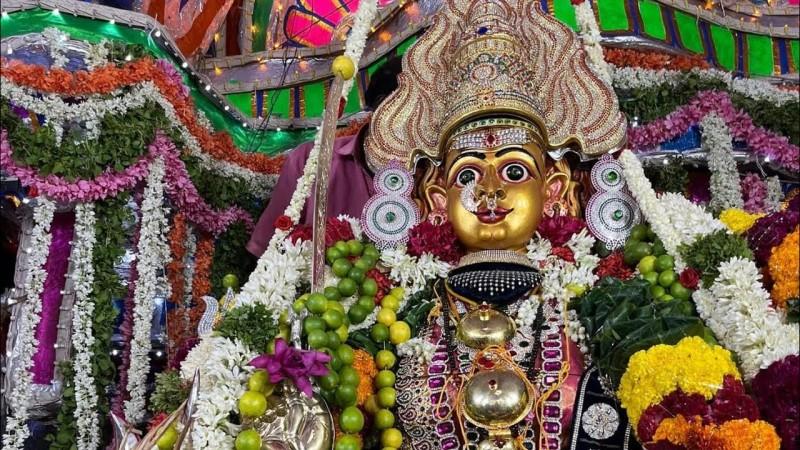
Chittoor Gangamma - © gather
Culture Etiquette in Chittoor
Dress Code
When visiting temples and religious sites, dress modestly and avoid revealing or skimpy clothing. Remember to remove your shoes before entering temples and shrines.
Greetings and Interactions
Greet elders with respect using "Namaste" or "Vanakkam." Public displays of affection are generally considered inappropriate, so it's best to avoid them in social settings. When communicating with locals, be patient and polite, even if there is a language barrier.
Temple Etiquette
Dress appropriately and cover your head when entering temples. Avoid wearing leather items inside, maintain silence, and refrain from taking photos during prayers and rituals. You can offer prayers and make donations according to your beliefs and comfort level.
Dining Etiquette
Use your right hand for eating, as the left hand is considered unclean. Be mindful to avoid pointing your feet towards others or food, and finish all the food on your plate as a sign of respect and appreciation.
Gift-Giving
If invited to a local's home, it's customary to bring a small gift like sweets, fruits, or flowers. Avoid gifting leather items or alcohol, as they may not be well-received.
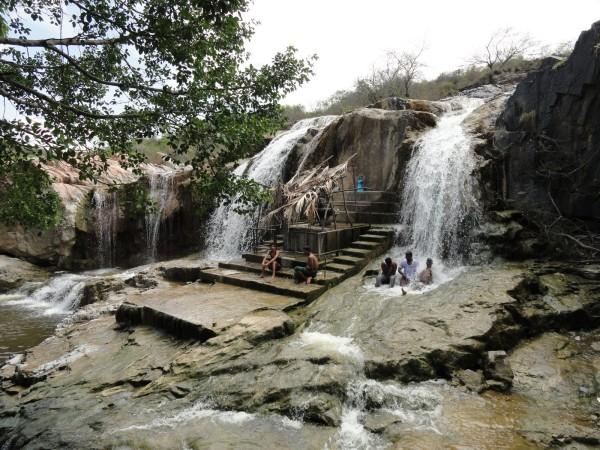
Kaigal Waterfalls - © gather
Essential Travel Information
Getting to Chittoor
By Air
- Tirupati Airport: The nearest airport, located about 72 km from Chittoor, offers limited domestic flights connecting to major cities like Delhi, Mumbai, and Bengaluru. Visitors can hire cabs or use state-run buses to reach Chittoor from the airport.
- Bengaluru International Airport: Approximately 165 km away, this airport serves as an alternative for international travelers. Car rentals and bus services are available for the journey to Chittoor.
By Rail
Chittoor Railway Station: This station is well-connected to various cities, including Chennai, Bengaluru, and Hyderabad. Regular trains operate from major urban centers, making it a convenient option for rail travelers.
By Road
- National Highways: Chittoor is accessible via several national highways, including NH-40 and NH-69, connecting it to cities like Tirupati, Kolar, and Bangalore.
- Bus Services: The Andhra Pradesh State Road Transport Corporation (APSRTC) operates frequent bus services from Chittoor to various destinations, including nearby towns and major cities in Andhra Pradesh and neighboring states.
Getting Around Chittoor
Public Transport
Buses: Local buses operate within the city and connect to nearby areas. APSRTC buses provide intercity travel options.
Taxis and Auto-Rickshaws
- Taxis: Private taxis are available for hire, offering flexibility for travelers to explore the city and surrounding areas. Fares are generally negotiable.
- Auto-Rickshaws: These are a popular mode of transport for short distances within the city. It’s advisable to negotiate the fare before starting the journey.
Ride-Sharing Services
- Ride-sharing services like Ola and Uber available in Chittoor, providing convenient options for travelers who prefer app-based transportation.
ATMs and Banks
- HDFC Bank ATMs: There are several HDFC Bank ATMs throughout Chittoor, including locations on Gandhi Road and Palamaner Road, which are open 24 hours. These ATMs provide easy access to cash for travelers.
- India1 ATM: Located on Main Street, KR Palli, this ATM is also operational 24/7, ensuring visitors can withdraw cash at any time.
- Other Banks: Various banks, including State Bank of India (SBI) and Andhra Bank, have branches in Chittoor, offering services like savings accounts, loans, and net banking.
Accommodation Choices
Hotels
- Hotel Kalyan Residency: A comfortable hotel offering modern amenities and located conveniently for travelers.
- Hotel Grand Krishna: Known for its hospitality, this hotel provides a range of services and is suitable for both business and leisure travelers.
- Hotel Sree Venkateswara: Offers budget-friendly accommodation with essential amenities, making it a popular choice among pilgrims and tourists.
Guest Houses and Lodges
- Sai Residency: A budget option that provides basic lodging facilities for travelers looking for economical stays.
- Local Homestays: There are several homestays available, offering a more personal experience and a chance to engage with local culture.
Pilgrim Accommodation
Due to Chittoor's proximity to Tirupati, many hotels cater specifically to pilgrims, providing packages that include transportation to the Tirumala temple.
Articles for you

Explore Yala National Park - Sri Lanka Travel, Asia
Tucked away in Sri Lanka’s southeastern corner, Yala National Park is where wild nature meets deep tradition. Known worldwide for its leopard population, the park is also home to elephants, sloth bears, crocodiles, and hundreds of bird species. Beyond wildlife, Yala opens doors to a cultural landscape dotted with ancient temples, Buddhist ruins, and coastal villages. For travelers seeking more than just a safari, Yala offers a chance to explore eco-tourism, local communities, and sacred heritage sites.
Population: The Yala National Park area doesn’t have a human population.
Economy: The economy around Yala National Park thrives on a blend of eco-tourism, agriculture, and local services. Safari tours, eco-lodges, and cultural experiences drive steady income for nearby towns like Tissamaharama and Kataragama, supporting thousands of families.
Landmarks: Famous for Block I of Yala and wildlife encounters, including elephants, sloth bears, crocodiles, and exotic bird species.

Explore Galle - Sri Lanka Travel, Asia
Nestled on Sri Lanka’s southern coastline, Galle is a vibrant city where history meets the sea. Its cobbled streets, colonial architecture, and serene beaches make it a must-visit destination for travelers seeking a blend of culture, adventure, and relaxation. A UNESCO World Heritage site, Galle captivates visitors with its Dutch Fort, bustling markets, and friendly locals. Whether you’re exploring the ramparts at sunset or savoring fresh seafood by the shore, Galle promises an unforgettable journey into Sri Lanka’s heritage.
Population: Approximately 113,000 in 2023.
Economy: Galle’s economy thrives on tourism, trade, and fisheries. The city’s historic fort, colonial architecture, and coastal charm draw thousands of international visitors each year, making tourism its main economic driver. Fishing remains vital for local livelihoods, supplying fresh seafood across the region.
Landmarks: Famous for the Galle Fort, Dutch Reformed Church & Maritime Museum, and Unawatuna Beach.

Explore Bentota - Sri Lanka Travel, Asia
Nestled along Sri Lanka’s southwestern coast, Bentota is a tropical paradise that blends golden beaches, vibrant culture, and thrilling adventures. Famous for its calm waters, luxury resorts, and scenic river estuary, Bentota has become a top destination for travelers seeking both relaxation and authentic experiences. From serene beach walks at sunrise to adrenaline-pumping water sports, this coastal town offers a perfect balance of leisure and exploration. With its proximity to Colombo and Galle, Bentota is easy to reach, making it an ideal stop for both short escapes and extended holidays.
Population: Approximately 37,000 in 2023.
Economy: Bentota’s economy thrives mainly on tourism, which drives local businesses such as hotels, restaurants, and wellness retreats. The town also benefits from fishing, coconut cultivation, and handicrafts like wood carving and batik textiles. Many residents rely on the growing demand for water sports and Ayurvedic treatments, making tourism the backbone of both income and employment in the area.
Landmarks: Famous for Bentota Beach, Bentota River Safari, and Kande Vihara Temple.

Explore Mirissa - Sri Lanka Travel, Asia
Mirissa is a charming coastal town on Sri Lanka’s southern shoreline. Known for its golden beaches, turquoise waters, and vibrant marine life, it has become a must-visit stop for travelers exploring the island. Many come for whale watching, surfing, and sunset views at Coconut Tree Hill, but Mirissa offers much more than postcard beauty. The fishing boats you see anchored by the bay carry generations of stories. Local traditions, delicious cuisine, and a laid-back rhythm of life shape every visitor’s experience.
Population: Approximately 4,700 in 2023.
Economy: Mirissa’s economy is largely shaped by its coastal location. Fishing has long been the backbone of local livelihoods, with generations relying on the Indian Ocean for income. In recent decades, tourism has become the main driver of growth, thanks to whale watching, surfing, and beachside hospitality.
Landmarks: Famous for Mirissa Beach, Coconut Tree Hill, and Parrot Rock Bridge.

Explore Nuwara Eliya - Sri Lanka Travel, Asia
Tucked away in the Central Highlands of Sri Lanka, Nuwara Eliya is often called “Little England”. With its rolling tea plantations, cool misty mornings, and colonial charm, this mountain town feels like a step into another world. Travelers come here to breathe fresh air, walk through flower gardens, sip the finest Ceylon Tea, and enjoy a pace of life far from the island’s busy cities. Whether you’re drawn by scenic landscapes, heritage architecture, or the warmth of its people, Nuwara Eliya is a destination that blends nature, culture, and history in perfect harmony.
Population: Approximately 781,000 in 2023.
Economy: Nuwara Eliya’s economy thrives mainly on tea production, as it sits in the heart of Sri Lanka’s central highlands, famous worldwide for Ceylon Tea. The city also benefits from a growing tourism industry, attracting visitors with its colonial charm, cool climate, and scenic landscapes.
Landmarks: Famous for Gregory Lake, Hakgala Botanical Garden, and Victoria Park.

Explore Sukau - Malaysia Travel, Asia
Nestled on the banks of the Kinabatangan River in Sabah, Malaysian Borneo, Sukau is a destination where wildlife, culture, and conservation come together. Known as one of Asia’s top spots for river safaris and eco-tourism, this quiet village offers a front-row seat to encounters with Bornean orangutans, pygmy elephants, proboscis monkeys, and exotic birdlife.
Population: Approximately 1,400 in 2019.
Economy: Sukau’s economy is shaped by its riverine location and natural resources. Traditionally, the Orang Sungai community relied on fishing, small-scale farming, and forest gathering for their livelihood. Today, the village has shifted toward eco-tourism, with river cruises, jungle trekking, and homestays providing income.
Landmarks: Famous for the Kinabatangan River cruises, Gomantong Caves, and Ox-bow lakes and wetlands.
